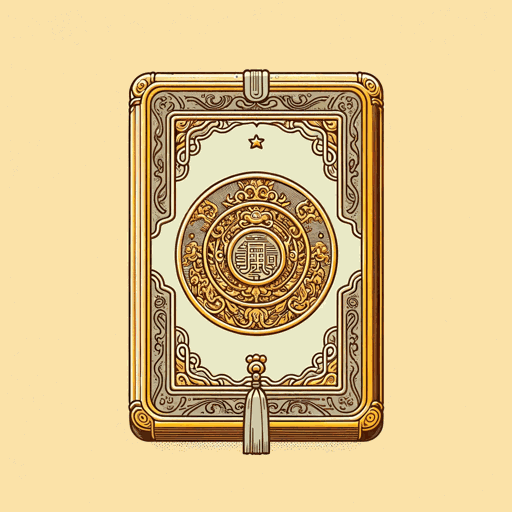74 pages • 2 hours read
Marco PoloThe Travels of Marco Polo
Nonfiction | Book | Adult | Published in 2004A modern alternative to SparkNotes and CliffsNotes, SuperSummary offers high-quality Study Guides with detailed chapter summaries and analysis of major themes, characters, and more.
Summary and Study Guide
Overview
Written in the 13th century, The Travels of Marco Polo details Italian explorer Marco Polo’s movements through Asia between 1271 and 1295. The book was co-written by Rustichello da Pisa, an Italian writer who met Polo while the two were in prison in Genoa, Italy. The text is comprised of a prologue and four subsequent books. Book 1 covers Polo’s travels on his way to China, with stops in the Middle East and Central Asia. Book 2 covers China, and especially the court of Kublai Khan. Book 3 focuses on coastal regions, including the east coast of Africa; Sri Lanka; Japan; and Southeast Asia. Book 4 focuses on Russia and the Mongols.
Niccolo Polo and Maffeo Polo, Marco’s father and uncle, respectively, are Venetian merchants who, naturally, spend a lot of time away from home. Venice at the time was a thriving city sometimes as war with its Italian neighbors, and always on the lookout for ways to expand economically and geographically. The Polos would have ventured forth to bring back goods and prestige to their beloved Venice.
They journey to the exotic East, through lands untamed and unknown, to China, to what many in Europe would consider the far end of the world. The journey is difficult and, at times, harrowing. They make it there and back again in part because of the protection of the great Mongol ruler Kublai Khan, in whose shadow their travels take place:
By virtue of this, the bearer, together with his whole suite, are safely conveyed and escorted from station to station by the governors of all places within the imperial dominions, and are entitled, during the time of their stay in any city, castle, town, or village, to a supply of provisions and everything necessary for their accommodation (589-92).
The events of the book take place in the 13th century, when Mongol hordes roamed Eurasia and conquered far and wide, ultimately building the greatest land empire the world has ever seen. Genghis Khan was the founder of that empire, and his descendants carried on his legacy of domination. Kublai was his most famous grandson, conquering China and added it to the Mongol empire.
The Polos make it home safely, then turn around not too many years later and go back, this time taking Niccolo’s teenaged son, Marco, with them. The Polos repeat their earlier success, making it to China and staying there for many years; their last journey is to return home, not exactly with the Great Khan’s blessing but with his grudging acceptance. In fact, they agreed to make another journey: “[Kublai] exacted from them a promise that when they had stayed some time in Europe and with their own family, they would return to him once more" (695-96).
The Polos did not keep their promise. In fact, Kublai Khan died before the Polos reached Venice. The personal protection that they had enjoyed, courtesy of gold tables bearing the royal seal, was not exactly respected once the Great Khan had died, and so the last part of the journey was a very harrowing one indeed. But make it home they did, bearing some treasures and a great many memories.
In a twist of fate, Marco Polo went to war before telling his story. He was captured and thrown into prison. In his prison cell was a writer named Rustichello, from Pisa. Marco told Rustichello what he had seen and learned, and this became The Travels of Marco Polo.
Polo at times highlights the differences between European culture and other cultures he comes in contact with, even passing moral judgment on people. Of the religious practices of some people in Japan, he has this to say: “‘The various ceremonies practiced before these idols are so wicked and diabolical that it would be nothing less than an abomination to give an account of them in this book’” (3675-76).
At other times, he describes something that many Europeans would have had thought fantastic or unbelievable and lets the reader make the judgment. For example, some people in China burn coal as fuel. This would have been uncommon but not unheard of in Europe. What would have seemed like luxury to many Europeans was a warm bath, even once a day. Yet, some Chinese people, Polo says, generally enjoy a warm bath “at least three times a week, and during the winter daily” (2534-35).
The narrative follows a basic geographic structure, enabling the reader to trace Polo’s progress on a map. Some place names would have been familiar to other Europeans; indeed, some of them corresponded exactly with those on existing maps. Others, through one method of error or another, do not match up and are, in some cases, incorrect.
Many people didn’t believe that The Travels of Marco Polo was a work of nonfiction, with descriptions of people, places and things too sensationalist to be genuine; this debate over the legitimacy of Polo’s travels continues to this day.
Editor’s Note: The citations in this guide refer to the Kindle edition of the book and reference the Kindle location of the citation in question.

